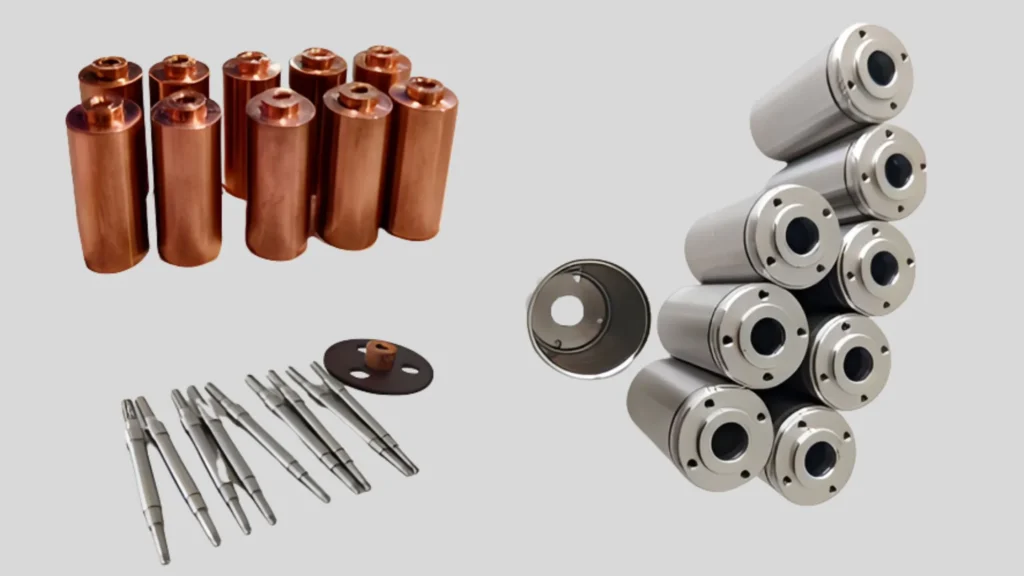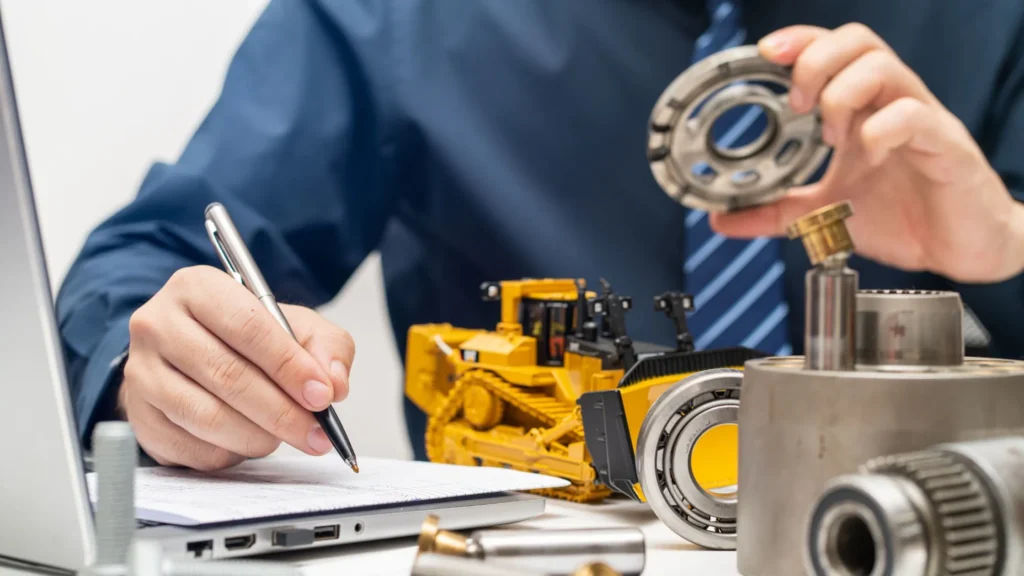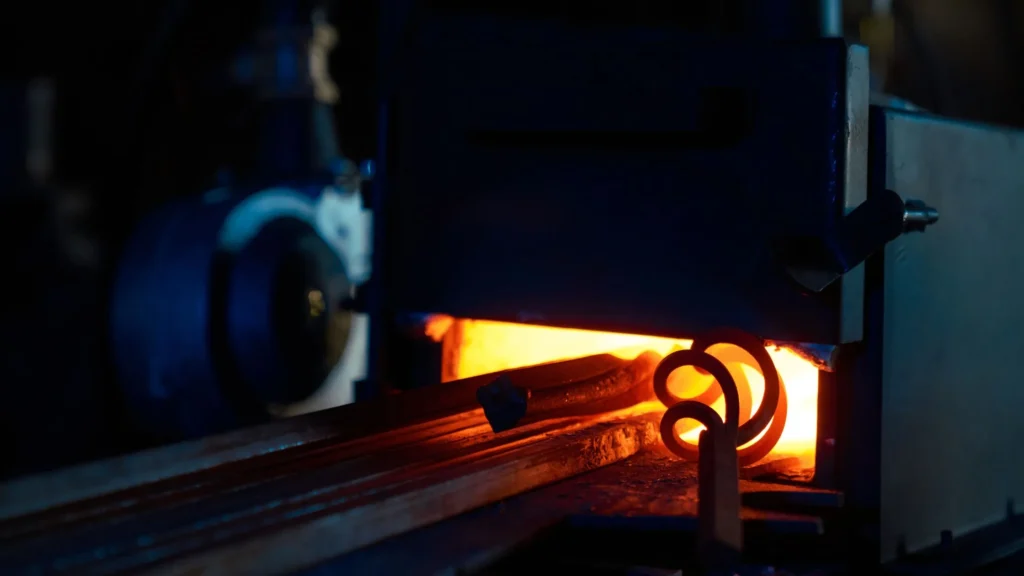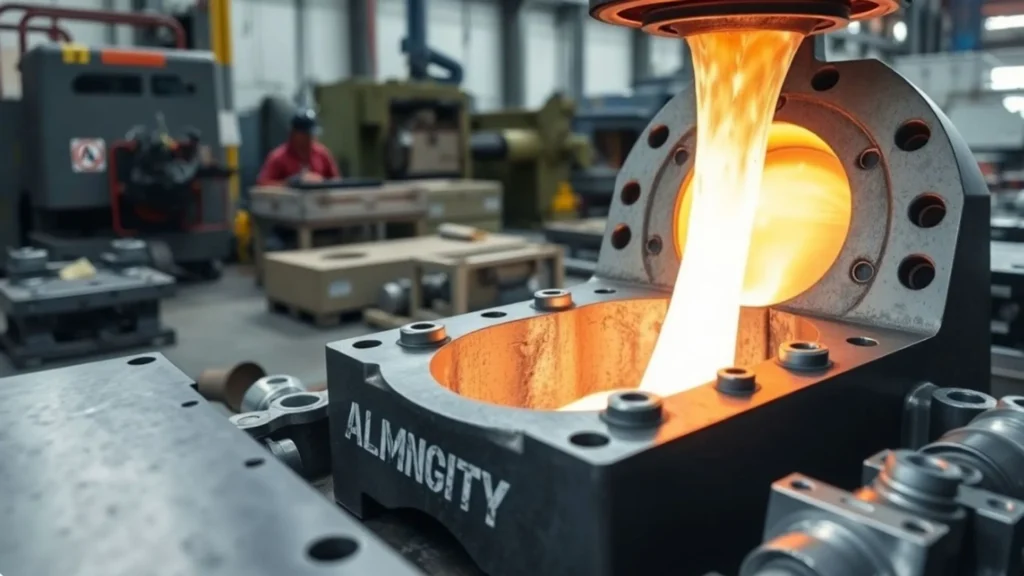CNC machining and manual machining play crucial roles in empowering industries like aerospace, defense, etc, by equipping them with the best quality products.
Some sectors need large batches of high-precision products, while others need custom-manufactured complex parts at affordable prices.
But which method is right for your business? Should you invest in automation or stick with manual flexibility for smaller runs? You’ll find the answers in this blog.
Here we’re going to break down the differences between CNC and manual machining, their strengths, costs, and use cases of each to help you choose the correct path for your project and production goals.
Table of Contents
What Is CNC Machining?
CNC machining is a precise manufacturing process used in various industries. They create highly accurate, complex parts with the help of automation and programmable machines. This production method turns raw materials into finished parts with the help of digital instructions and minimal human intervention.
If you want a detailed explanation of what is CNC machining and the technologies involved, check out our in-depth guide.
Common CNC Machines
- CNC Lathes
- CNC Milling Machines
- 3-Axis and 5-Axis CNC Systems
The actions of these machines are defined by a CAD (Computer-Aided Design) file, which contains the blueprint of the part and is controlled by a CAM (Computer-Aided Manufacturing) program. They follow the instructions of CAM with 100% accuracy to produce high-precision parts.
Where Is CNC Machining Used?
Several critical industries rely on CNC machining for tight tolerances and repeatability. They are:
- Aerospace
- Automotive
- Medical
- Consumer electronics
- Industrial equipment
Example: Medical device companies produce titanium bone screws with 5-axis CNC milling for precise threading and tolerances within ±0.01 mm.
Here’s our detailed blog on how it works to help you understand the advantages of CNC machining over conventional methods.
What Is Conventional (Manual) Machining?

Conventional machining is the traditional approach where skilled machinists control the movement of the machine, feed rate, and cutting depth instead of a computer. They use hand-operated tools like manual lathes, milling machines, etc., to shape various materials.
History Of Manual Machining
The history of manual machining dates as far back as ancient times, when our forefathers used to make tools from bones, wood, and stones. This technique has evolved and impacted the Greek and Roman civilizations and the Industrial Revolution.
So, the conventional machining used to be the primary tooling method before the entry of automation. It helped the small workshops and industrial manufacturing sector, even if the success rate depended on the machinist’s skill.
But why would people still choose manual machining when there’s automated machining? It’s due to the flexibility of this technique when dealing with small batch productions, single pieces, and rapid repairs.
Note: Conventional machining provides the benefit of cost-effectiveness and practicality for businesses focused on custom manufacturing and small-scale production.
Key Differences Between CNC and Conventional Machining
You can’t choose a machining method just because it’s the most advanced or most used in manufacturing. This table will give you an idea of what to go for based on the product specifications.
| Aspect | CNC Machining | Conventional Machining |
| Accuracy | Very precise and repeatable (computer-controlled) | Depends on machinist skill and less consistent |
| Design Complexity | Handles complex and 3D parts easily | Best for simple shapes and designs |
| Speed | Faster and runs automatically | Slower, needs manual operation |
| Materials | Works with a wide range, including hard metals | Mostly used for softer materials |
| Setup Cost | Higher upfront cost, better for large batches | Lower setup cost, costlier for big volumes |
| Labor Needed | Needs programmers, less manual work | Needs skilled hands-on machinists |
| Best For | High-volume production | One-offs, repairs, and low-volume jobs |
Tip: Do you need a cost-efficient solution for your CNC vs. manual machining dilemma? Follow a hybrid workflow by using manual machining for prototyping and CNC for full-scale production.
Pros & Cons of CNC Machining
Are you concerned about the tight deadlines, detailed components, or bulk orders? Then the benefits of CNC machining for mass production will be your lifesaver.
What Makes CNC Machining a Good Choice

Consistent precision:
Perfect for industries where the tiniest error creates huge complications.
- Great for mass production:
It can run parts around the clock with minimal supervision.
- Handles complex components easily:
3D shapes, tight tolerances, and intricate patterns.
- Fast turnaround:
Automated processes help meet tight deadlines.
- Less room for human error:
This digital process keeps the output highly predictable.
- Easy to scale:
Whether it’s 100 pieces or 10,000, CNC is built for batch production.
- Simple digital file update:
Programs can be stored, reused, or tweaked without starting from scratch.If you’re comparing precision parts CNC vs manual machines, CNC takes the lead when accuracy and repeatability are critical.
What You Should Be Aware Of
- High initial cost:
The machines, software, and training are highly expensive.
- Require skilled programming:
It is compulsory to hire machinists and programmers who know G-code.
- Ongoing maintenance:
Regular care is essential to keep the machines running well.
- Not ideal for tiny batches:
Manual machining may be quicker and more cost-effective for a few one-off parts.
So, CNC machining complex components is the answer to multi-dimensional designs and large-scale production runs.
Pros & Cons of Conventional Machining
Conventional machining is still relevant in this highly automated manufacturing industry because of the hands-on control and adaptability it offers.

When to Use Manual Machining Over CNC
- Ideal for traditional machining for one-off parts, prototypes, or quick adjustments.
- When there’s no need for software, programmers, and complex setups
- Need more flexibility to modify the setup and tooling on the spot.
- The machinist can start working on the project without a high investment.
- The lower cost of conventional machining small runs makes it budget-friendly
Limitations of Conventional Machining
- Relies heavily on the operator’s experience and precision.
- Slower production speed, especially for complex geometries.
- Manual machines aren’t built for high-volume output.
- Not suitable for highly precise and repeatable parts.
- Consistency can vary across parts due to human error.
Cost Comparison & ROI Analysis
Your budget can be a huge factor that influences your decision and technical capability. So it is very important for you to understand the initial investments and long-term ROI before you commit to CNC or manual machining.

Upfront Costs
| Cost Factor | CNC Machining | Manual Machining |
| Machine Setup | ₹10–50 lakhs (depending on axis & brand) | ₹2–10 lakhs |
| Operator Skill | Skilled programmer required | Skilled machinist required |
| Setup Time per Job | Longer initially | Faster for simple tasks |
| Maintenance | High-tech systems, higher cost | Simpler maintenance |
(The cost mentioned in the table is not a fixed price and can vary based on various factors.)
- CNC machines have a higher initial cost with repeatability for mass production.
- Manual machines cost less upfront and are practical for low-volume or one-off jobs.
Long-Term ROI
Now, let’s take a look at the machining cost comparison over time:
- CNC is cost-effective after 50–100 identical units due to reduced per-part labor.
- Manual machining offers better ROI for small batch runs and frequent design changes.
Are you still weighing CNC vs manual machining ROI? Ask yourself “whether you’re focused on precision and scale or flexibility and upfront cost.”
Which Machining Method Should Your Business Choose?
Not sure whether to go the CNC route or stick with manual machining? The right choice depends on what you’re making, how many parts you need, and how fast you need them.
Here’s a clear breakdown to help you decide.
Scenario-Based Recommendations
Let’s look at a few practical examples from real industries:
- Rapid prototyping in electronics manufacturing
→ CNC machining is the best bet for electronics, medical devices, or precision instruments, since it allows digital iteration with minimal error. - Vintage machinery part restoration in local workshops
→ Small tool rooms or MRO teams rely on skilled machinists for low-volume, fit-to-function work without the need for CAD files or automation. - Mass production of electric vehicle (EV) components
→ CNC systems excel in repeatability, precision, and speed, especially for aluminum or alloy parts. - Repair jobs in remote areas or power plants
→ Manual machines are preferred where digital equipment may be impractical or unavailable.
CNC vs. Manual Machining Decision Matrix
| Factor | Opt for CNC Machining | Opt for Manual Machining |
| Batch Size | Mid-to-high volumes (100+ parts) | One-offs, prototypes, or very small quantities |
| Precision Standards | Tolerances under ±0.01 mm required | Visual or functional accuracy |
| Turnaround Pressure | Fast output needed; automation streamlines delivery | Flexible lead time |
| Skilled Labor Availability | Limited internal machining expertise | Experienced machinists in-house |
| CapEx Readiness | Willing to invest for long-term ROI | Prefer to work with existing, low-cost manual infrastructure |
Hybrid Approaches: Combining CNC and Conventional Methods
It would be difficult to stick to a single machining system when you handle diverse projects with unique demands. On these occasions product engineers and machinists combine both CNC and manual machining systems for better results, faster turnaround, and cost efficiency.
Why Combine Both Methods?
- Enhance Working Efficiency
Use CNC for mass-producing complex components and modify them manually for customization or last-minute adjustments. - Control Costs
CNC machining is not ideal for simple tasks that a skilled machinist can handle faster and cheaper. - Handle Unexpected Changes
Manual tools can take care of tweaks without reprogramming a CNC setup in repair, R&D, or prototyping environments. - Fill Skill Gaps
Experienced machinists spot details machines miss, and their hands-on knowledge complements CNC precision in quality control and finishing work.
When to Consider a Hybrid Approach
- You serve clients with diverse order volumes and customization needs.
- Your facility supports both high-precision production and repair services.
- You’re upgrading from manual to CNC but want to retain legacy machines and expertise.
Conclusion
CNC machining and manual machining have unique practical benefits that make them relevant in different use cases. So one cannot replace the other. But choosing the right one or combining both methods starts with understanding your client’s expectation with the project result.
Are you still confused about which one suits your prototyping, mass production, etc.? Then come to Venttup Ventures.
Venttup Ventures is an ecofriendly Indian MaaS company with in-house consultation and product design. We are a trusted B2B supplier in various industries like aerospace, space research, defense, shipbuilding, and many more.
We help you with your project with clear direction to start and connect with the right manufacturing unit in India to produce cost-effective batches. Are you ready to manufacture your high-precision parts? Contact us now.
Frequently Asked Questions (FAQ)
Can manual machines be converted to CNC?
Yes. You can retrofit your manual machines with motors and controllers to make them CNC-compatible. It is expensive and will never match the performance of original CNC machines.
Is CNC machining always more precise?
Yes. CNC machines follow digital instructions, and they can achieve tighter tolerances and consistent results.
Do you need an expert machinist for CNC?
You need someone skilled in CAD/CAM software, programming, and machine setup for CNC machining and not a manual machinist.
What materials suit each method best?
Both methods can work well with various materials like metals, plastics, and composites. But CNC is better for tough materials, and manual machining works well for softer materials.
How does part complexity affect process choice?
Higher complexity usually means CNC. It’s faster, more accurate, and better for complicated geometries or multi-part production. Manual machining suits simple shapes or one-off parts.







